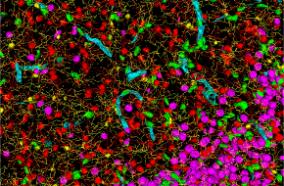Matching early arterial oxygenation to long-term outcome in severe traumatic brain injury: target values.
Matching early arterial oxygenation to long-term outcome in severe traumatic brain injury: target values.
J Neurosurg. 2019 02 08;132(2):537-544
Authors: Alali AS, Temkin N, Vavilala MS, Lele AV, Barber J, Dikmen S, Chesnut RM
Abstract
OBJECTIVE: The aim of this study was to examine the relationship between early arterial oxygenation thresholds and long-term outcome after severe traumatic brain injury (TBI).
METHODS: In a post hoc analysis of a randomized trial, adults with severe TBI were classified based on exposure to different levels of arterial oxygenation as measured using the average of arterial partial pressure of oxygen (PaO2) values obtained within 24 hours of admission. Potentially important PaO2 thresholds were defined a priori. The primary outcome was Glasgow Outcome Scale-Extended (GOSE) score at 6 months. Secondary outcomes were cognitive outcomes measured using a battery of 9 neuropsychological tests administered at 6 months, and 6-month mortality.
RESULTS: In adjusted analyses, oxygenation thresholds of 150 and 200 mm Hg were associated with better functional outcome at 6 months (adjusted OR for better functional outcome on GOSE 1.82 [95% CI 1.12-2.94] and 1.59 [95% CI 1.06-2.37], respectively) and improved cognitive outcome at 6 months (adjusted beta coefficients for better cognitive percentile across 9 neuropsychological tests: 6.9 [95% CI 1.3-12.5] and 6.8 [95% CI 2.4-11.3], respectively). There was no significant association between oxygenation level and 6-month mortality except at a PaO2 threshold of 200 mm Hg (OR for death 0.36, 95% CI 0.18-0.71). Higher or lower oxygenation thresholds were not associated with functional or cognitive outcome.
CONCLUSIONS: In this observational study, the relationship between early arterial oxygenation and long-term functional and cognitive TBI outcomes appears to be U-shaped. Mild levels of hyperoxemia within the first 24 hours after injury were associated with better long-term functional and cognitive outcomes. These findings highlight the importance of examining balanced oxygen supplementation as a potential strategy to improve TBI outcomes in future research.
PMID: 30738409 [PubMed - indexed for MEDLINE]



















